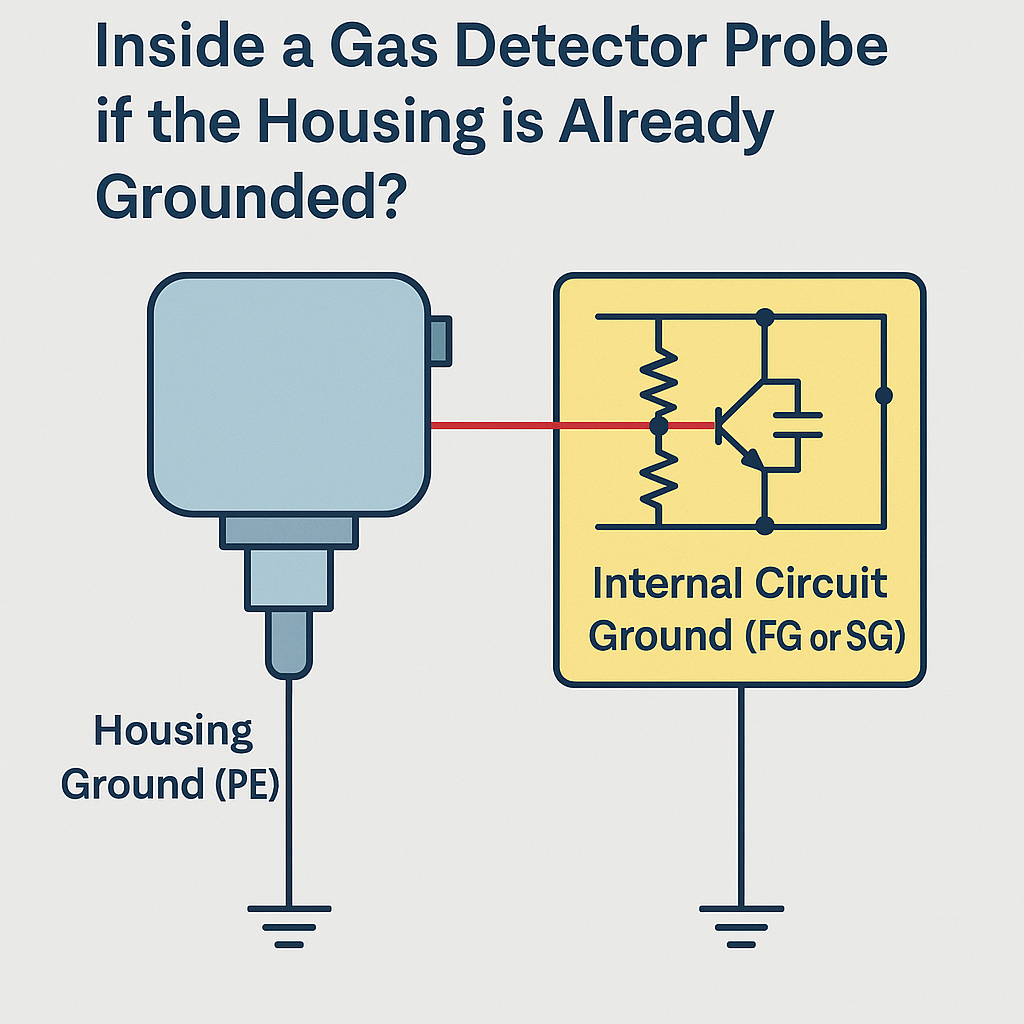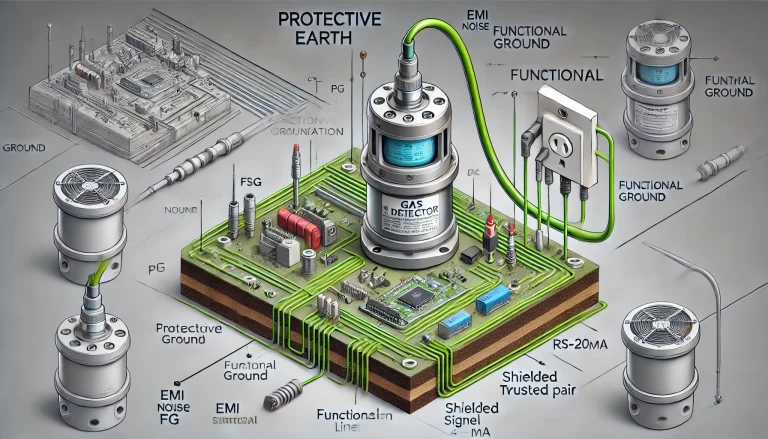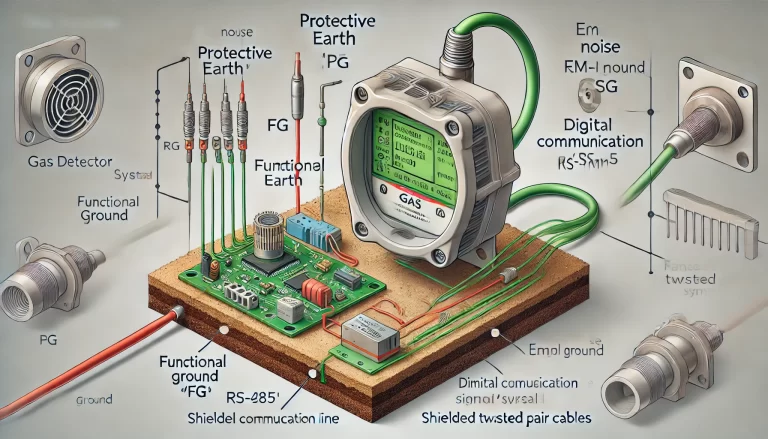In industrial environments, gas detection probes play a critical role in ensuring personnel and process safety. Proper installation and grounding of these devices are essential to their reliable operation. A common question among engineers and technicians is:
“If the gas detector’s housing is already grounded, do we still need to ground the internal circuit?”
The short answer is: Yes, internal grounding is still necessary.
This article explains why, and under what circumstances internal grounding is essential, even when the external housing is already connected to earth ground.
1. Understanding the Two Types of Grounding
In industrial instrumentation, grounding is not a single-purpose action. There are typically two main types of grounding involved:
🟢 a. Protective Earth (PE) — Housing Ground
Purpose: Electrical safety and shielding.
Function: Prevents electric shock by ensuring exposed conductive parts (e.g., metal housing) are at earth potential.
Typical Connection: Outer shell or body of the gas detector connected to the grounding system or metal junction box.
🔵 b. Functional Ground (FG) or Signal Ground (SG) — Internal Circuit Ground
Purpose: Signal reference and stability, EMI noise suppression, and data transmission integrity.
Function: Serves as a stable voltage reference point for the sensor electronics, analog/digital signal processing, and communication circuits.
Typical Connection: Circuit board GND, signal reference line, or RS-485 ground pin.

2. Why Internal Grounding is Still Required
⚠️ a. Housing Ground Is Not Electrically Bonded to Signal Ground
In most designs, the housing is isolated from the electronics inside. Grounding the enclosure does not provide a return path for signal current or stabilize the internal voltage reference.
⚡ b. Preventing Signal Noise and Data Errors
For analog signals (e.g., 4–20mA), poor grounding may result in offsets, oscillations, or drift.
For digital signals (e.g., Modbus RTU over RS-485), lack of proper ground reference may cause communication failures, CRC errors, or intermittent signal loss.
🔄 c. Ground Loops and Electromagnetic Interference (EMI)
Without a well-designed internal grounding system, you increase the risk of ground loops — voltage differences between various grounding points that induce unwanted currents. This can lead to erratic behavior or even damage the device in high-EMI environments.

3. Grounding Best Practices for Gas Detector Probes
| Item | Recommendation |
|---|---|
| Housing Ground (PE) | Always connect to safety ground per electrical code |
| Signal/Functional Ground (FG/SG) | Reference the circuit board to a stable system ground |
| Shielded Cable | Use shielded twisted pair cables for analog and digital signals |
| Shield Connection | Connect shield to ground at one end only (typically control panel side) |
| Avoiding Ground Loops | Use isolation techniques and maintain single-point grounding wherever possible |
| Explosion-Proof Applications | Ensure grounding complies with intrinsically safe wiring standards |
4. Special Considerations for Hazardous Areas
Gas detectors used in explosion-proof or intrinsically safe environments often require strict grounding practices to avoid ignition risks. In such cases:
Grounding is part of safety certification (e.g., ATEX, IECEx);
Improper grounding may void certifications or pose a safety hazard;
Refer to the manufacturer’s wiring diagrams and grounding instructions.

5. Conclusion
Even if a gas detector’s outer housing is grounded, internal circuit grounding is still crucial for:
Signal integrity
Electromagnetic immunity
Data communication reliability
Compliance with safety and installation standards
✅ Always follow the instrument’s grounding diagram and apply both protective and functional grounding correctly.
For field engineers and installers, neglecting internal grounding can result in hard-to-troubleshoot failures, especially in noisy or safety-critical environments.
